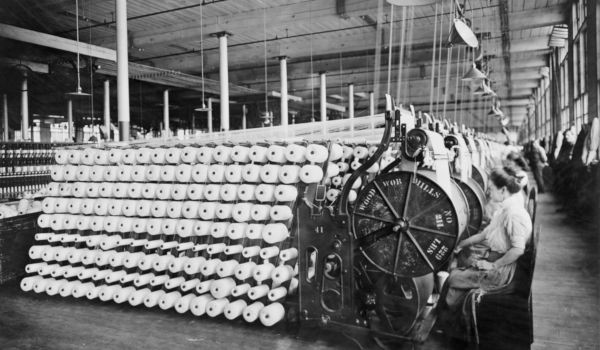Since the “stone Age”, human beings have manufactured and sold their instruments to facilitate the daily life of society. Some of these practices persist untill today. So, why even in the face of this, is there a devaluation of handcrafts?
We brought up the three main reasons why handicrafts are devalued by society. For this, we count on the help of the educator and master in history, Carina Calheiros.
1. The Industrial Revolution
As mentioned, from the beginning, humans developed useful manual techniques for our daily lives.
They generated jobs and those who produced them were valued by everyone who consumed them. For example, without the craftsman to make your dish, you had no choice but to eat on the floor! Have you thought?
However, since the Industrial Revolution and its transformations in society, manual labor has lost strength. From this, the men who used to create with their women, now operated series production machines.
Thus, two types of knowledge were considered. There was manual knowledge, which started to be devalued. Industrial knowledge also appeared, which belonged to the men who operated in the factories for long hours of the day and brought sustenance to the family.

2. Devaluation of women’s work
From the Industrial Revolution to the Second World War, despite fighting for her rights, women were still very limited to the domestic space. For this reason, most of their activities were done inside they own homes, where the artisanal production was stored.
Thus, while men worked in the industries, women did household chores and dealt with motherhood. To complete their income, they produced handicrafts.
The manual work of the artisans competed with the market and the techniques of series production. For this reason, handcrafts were one of the resources for female emancipation.
In summary, at this point we are beginning to differentiate between two models. There was “formal work” and it was valued, that is, that which was normally done by men in the factories. In contrast, informal and undervalued work, historically performed by women in their homes.
Handmade work is then disowned twice. First because it is an activity that has not been adapted to industrial mass production as it is a manual and creative work. Second because it has historically been linked to women, motherhood and the domestic space.

3. Structural sexism and chauvinism
Historically, men’s knowledge has been valued more than women’s knowledge. Mens dictated what was or was not valuable. Soon, the pieces that the artisans developed were seen as something worthless, being just an object developed by the woman to “pass the time”, as a hobby or a job that needed to be done for your children and family.
That thought reflects today, when we see so many complaints about the price charged for artisanal work and the devaluation of the product as art. In this sense, structural chauvinism is also related to the lack of consideration for the hours of work of the artisan for the creation of the piece.
One of Briselier’s goals is to fight for all artisans to have their work valued fairly. Thus, we can argue against any and all who ask us for a discount. From that, we have content to clearly justify our place of speech: information and education is the soul of the revolution.
